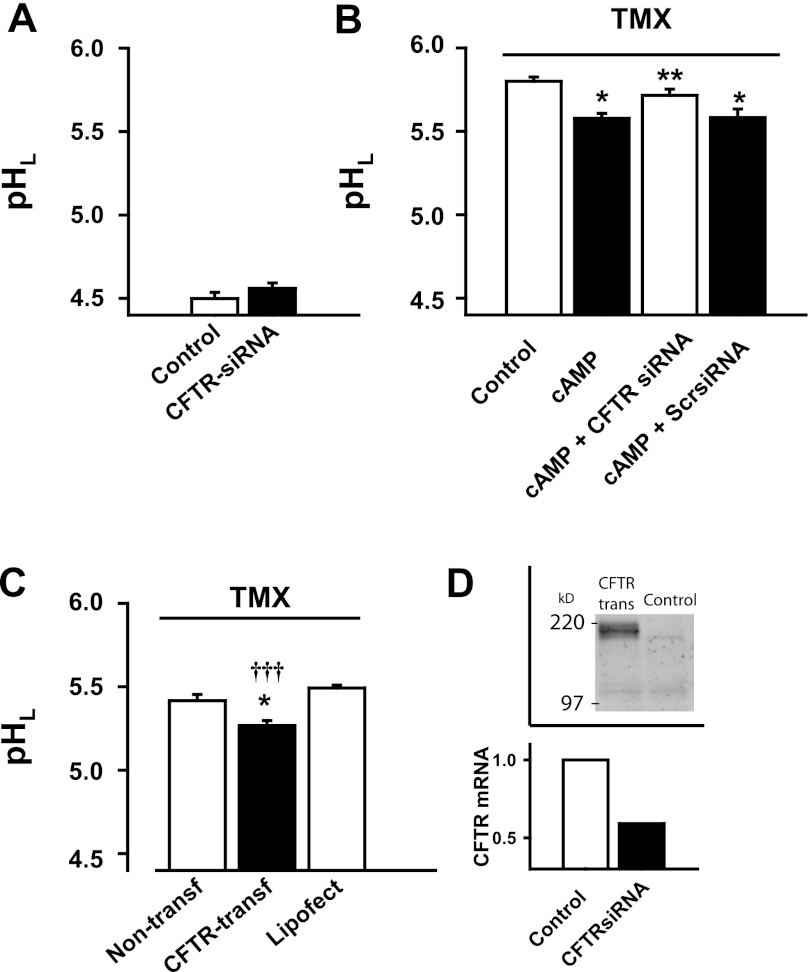Fig. 3.
Molecular manipulation of CFTR alters lysosomal pH. A: CFTR small interfering (si)RNA leads to a small but insignificant increase in the baseline lysosomal pH in cultured RPE cells (n = 12). B: siRNA against CFTR blocked the acidifying effect of the cAMP cocktail mix [cAMPmix: 10 μM forskolin, 500 μM cpt-cAMP, and 100 μM IBMX (n = 24) on lysosomal pH in ARPE-19 cells treated with tamoxifen, 30 μM, n = 18]. Scrambled siRNA (Scr-siRNA) transfection did not alter lysosomal pH (n = 12). *P < 0.05 vs. tamoxifen control, **P < 0.05 vs. tamoxifen + cAMP mix. C: RPE cells that overexpressed CFTR (CFTR-transf) demonstrated lower lysosomal pH when exposed to tamoxifen (30 μm), compared with either the nontransfected (non-transf) or empty vector-transfected (Lipofect) cells (n = 3). *P < 0.05 vs. non-transf, †††P < 0.001 vs. Lipofect. D, top: Western blot showing light band of CFTR in control, with increased expression after transfection with plasmid. D, bottom: quantitative PCR indicating decrease in mRNA for CFTR after treatment with siRNA.

